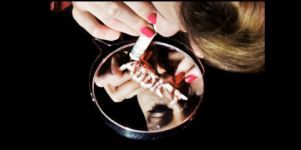Article
Drug, Sex Addictions Exhibit Similar Brain Activity
Author(s):
Sex addicts and drug addicts display similar brain activity when they are triggered with the appropriate stimuli.

Sex addicts and drug addicts display similar brain activity when they are triggered with the appropriate stimuli, according to a recent study in PLOS ONE.
Researchers from the University of Cambridge used functional magnetic resonance imaging (fMRI) and measured cue reactivity in 19 healthy patients and 19 others suffering from compulsive sexual behavior (CSB).
While there is no formal definition of CSB, Valerie Voon, MD, who served as a contributor to the study, said in a statement that patients were deemed to have CSB if they had difficulty controlling sexual urges and it negatively affected their daily life and relationships.
“In many ways, they (CSB patients) show similarities in their behavior to patients with drug addictions,” she said. “We wanted to see if these similarities were reflected in brain activity, too.”
To compare brain reactions in drug and sex addicts, the researchers homed in on neural regions that are increasingly known to be active in drug addicts when triggered.
In addition, the subjects were shown short videos that were categorized as “explicit sexual, erotic, non-sexual exciting, money, or neutral.” The patients were asked to report their level of sexual desire and enjoyment while watching the videos.
Compared to the control patients, the researchers discovered a spike in CSB participants’ dorsal anterior cingulate, ventral striatum, and amygdala activity when shown sexually explicit videos. These regions were also found to be active when drug addicts are stimulated by drugs.
According to the statement, the ventral striatum is responsible for reward and motivation in drug addicts, the dorsal anterior cingulate drives reward and craving, and the amygdala prioritizes emotions and events.
In addition, the CSB patients reported higher levels of desire when shown explicit videos, but did not necessarily like the clips more than controls.
“The current and extant findings suggest that a common network exists for sexual-cue reactivity and drug-cue reactivity in groups with CSB and drug addictions, respectively,” the authors wrote. “These findings suggest overlaps in networks underlying disorders of pathological consumption of drugs and natural rewards. While this study may suggest overlaps with substance-use disorders, further clinical studies are required to determine whether CSB should be categorized as an impulse-control disorder, within an obsessive-compulsive spectrum or as a behavioral addiction.”



